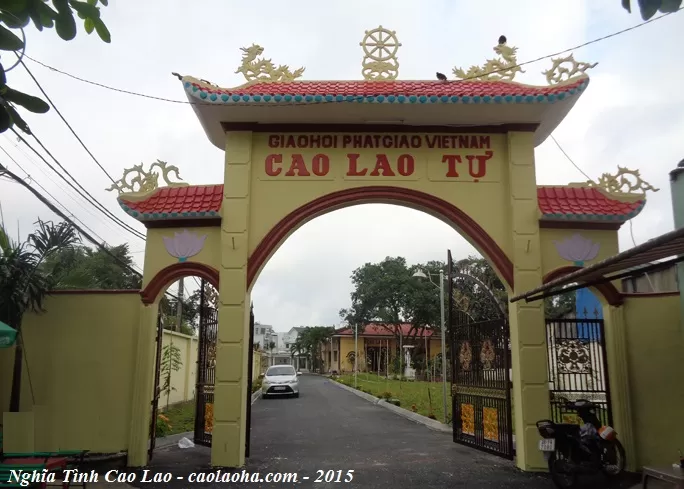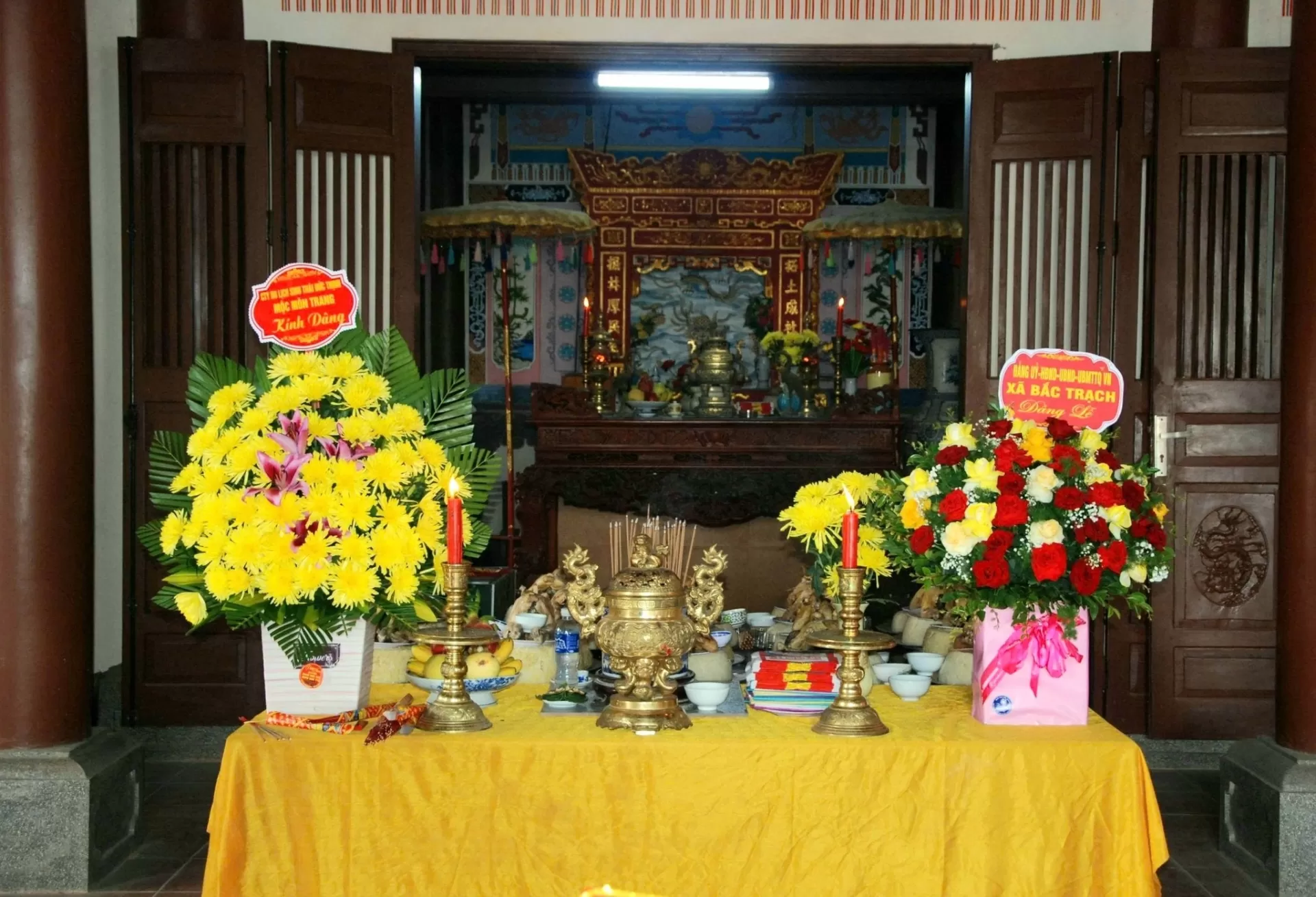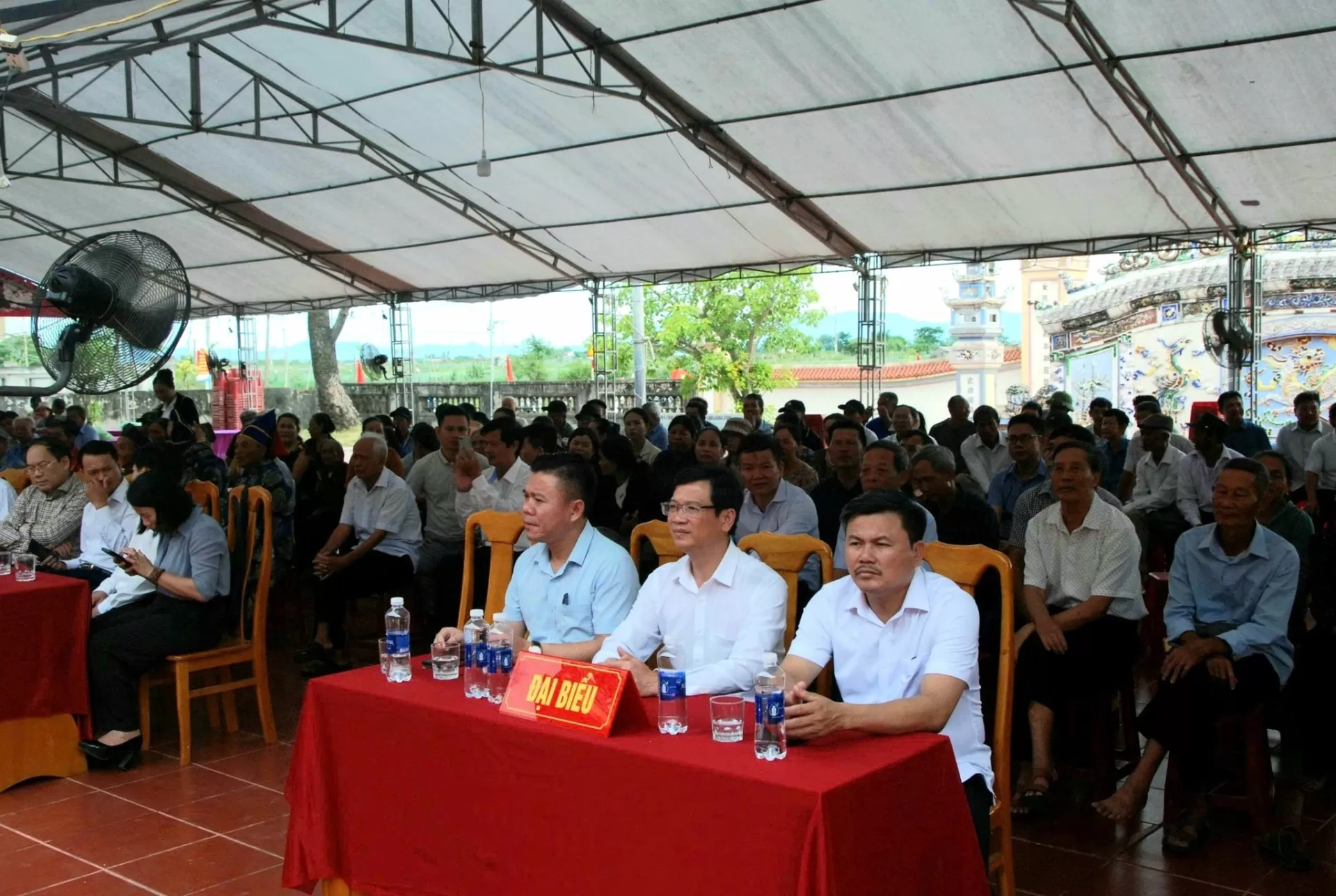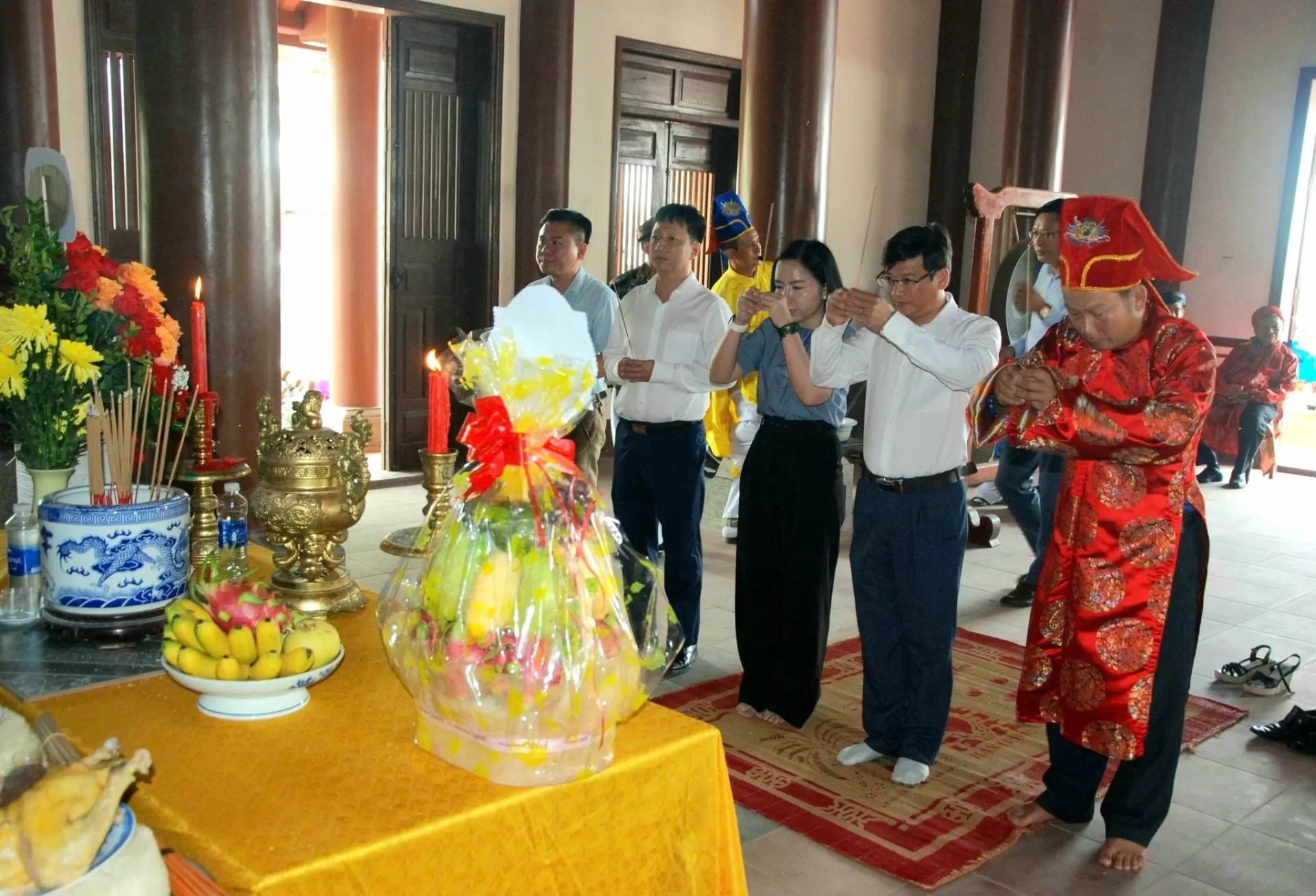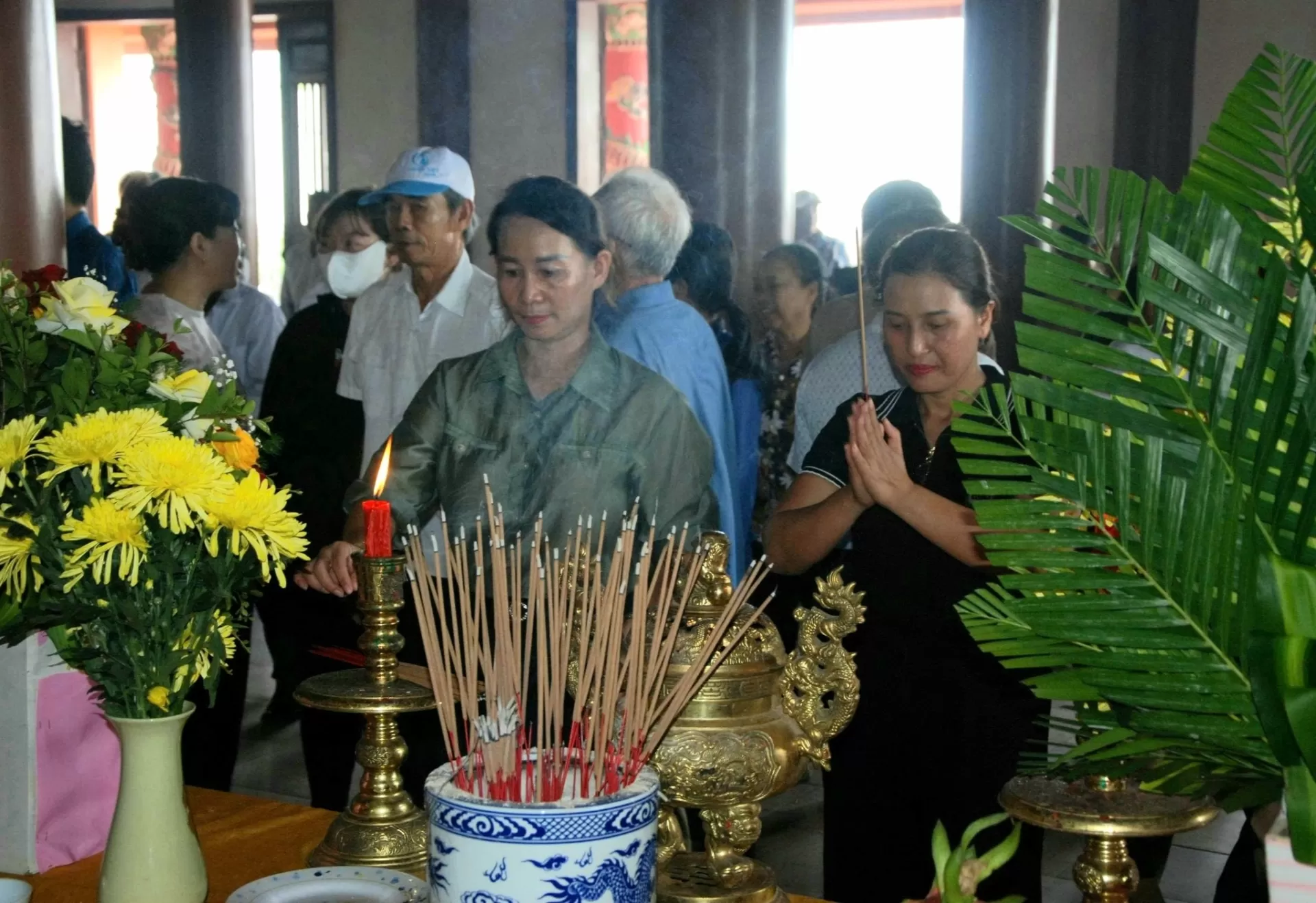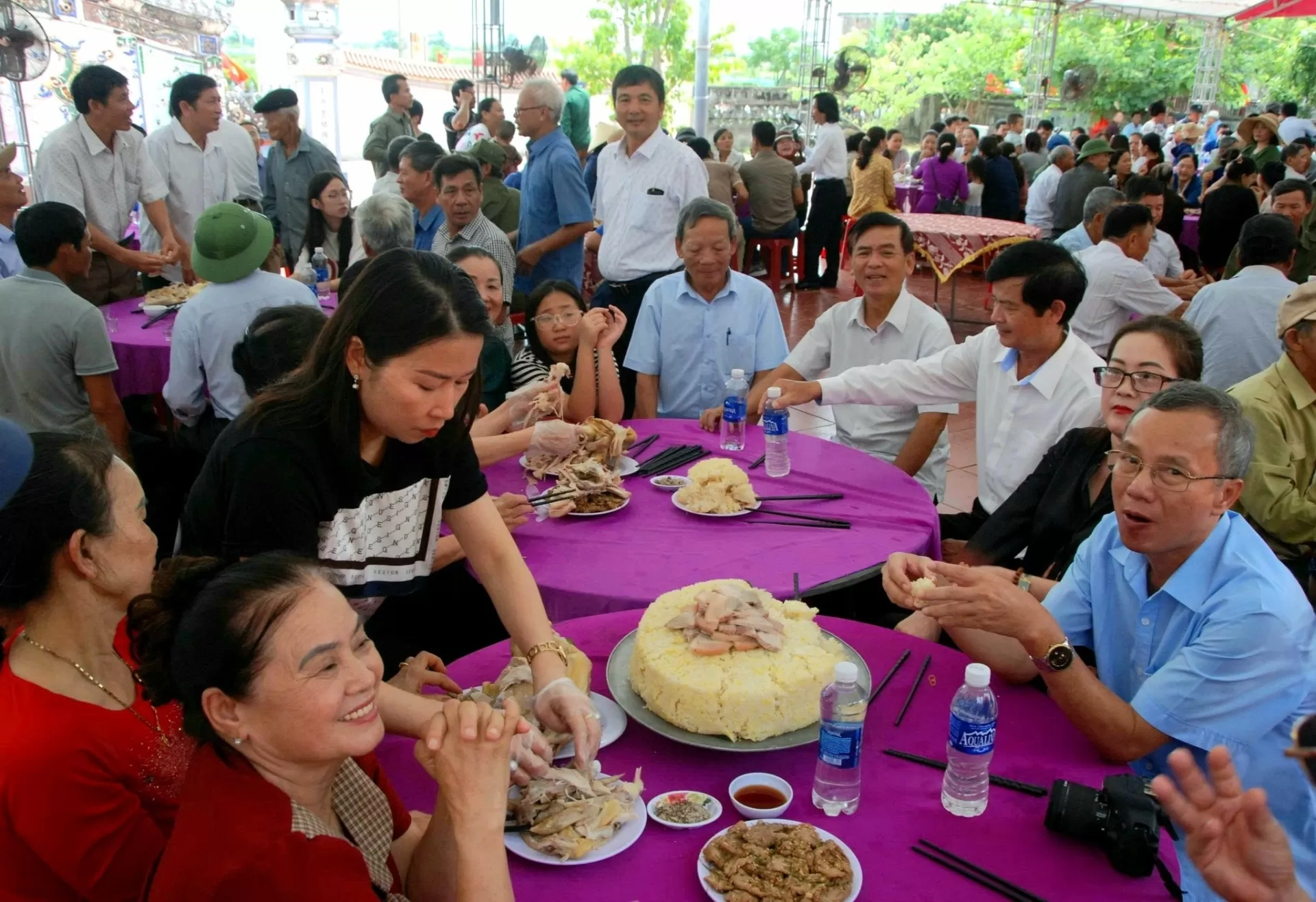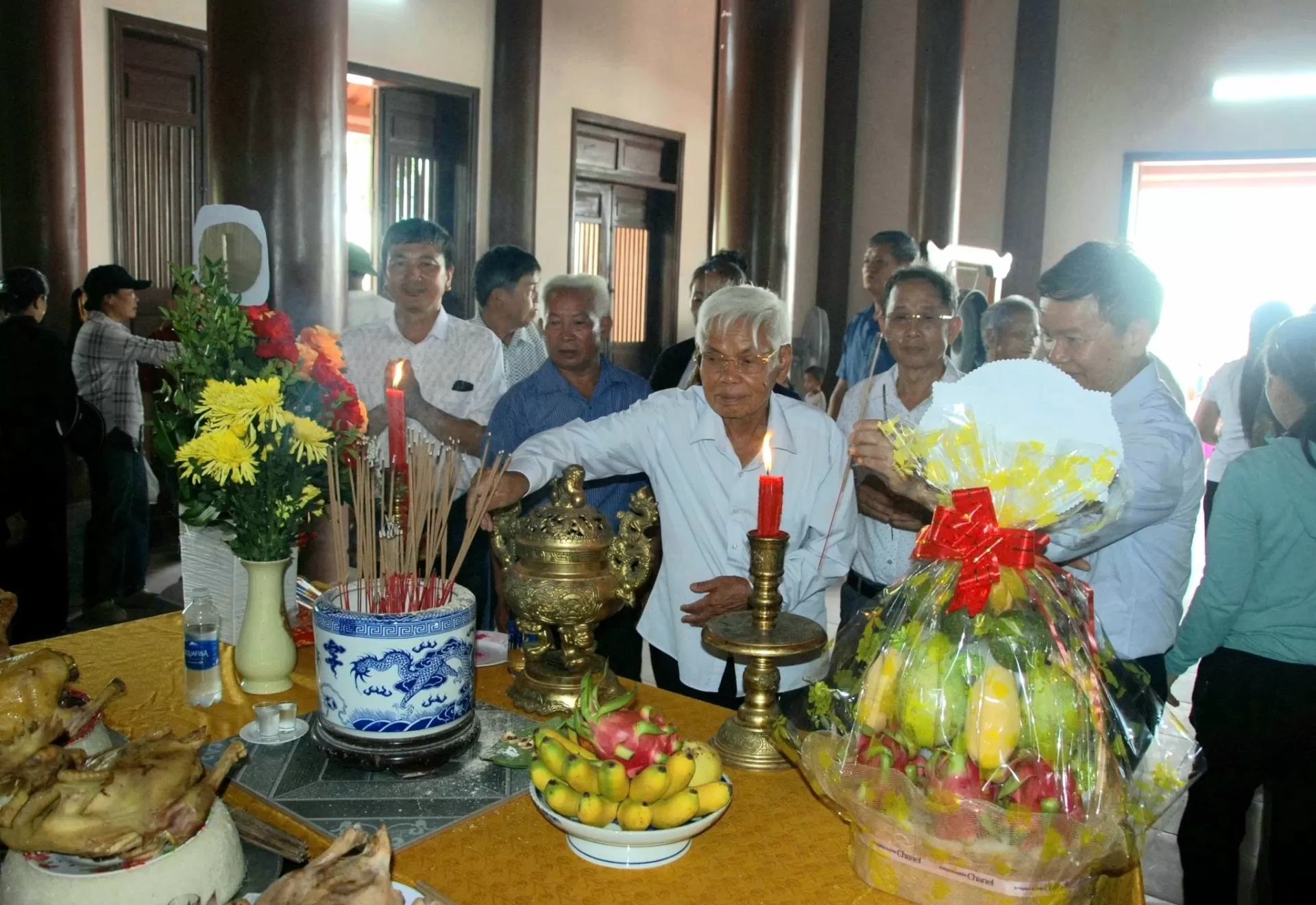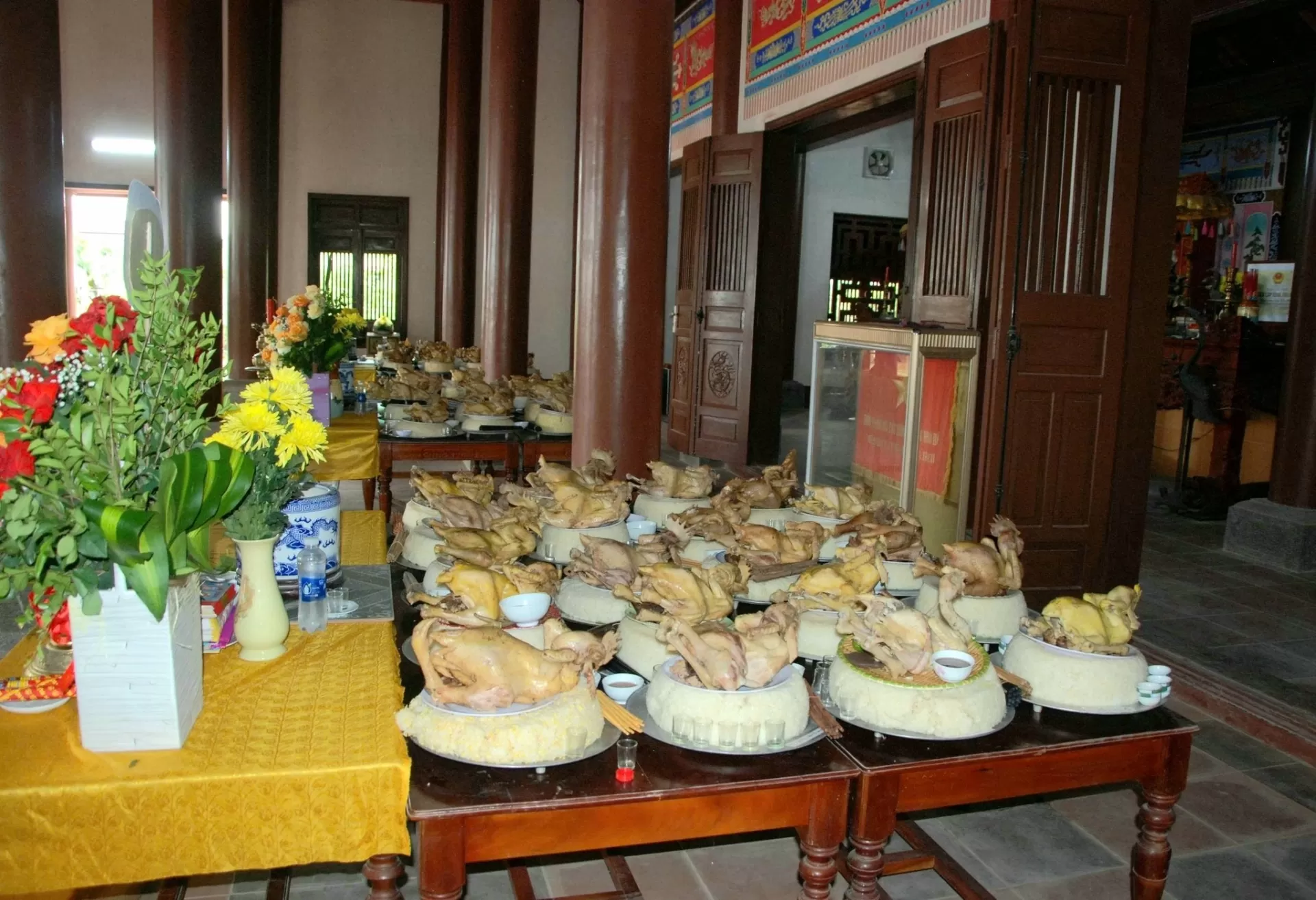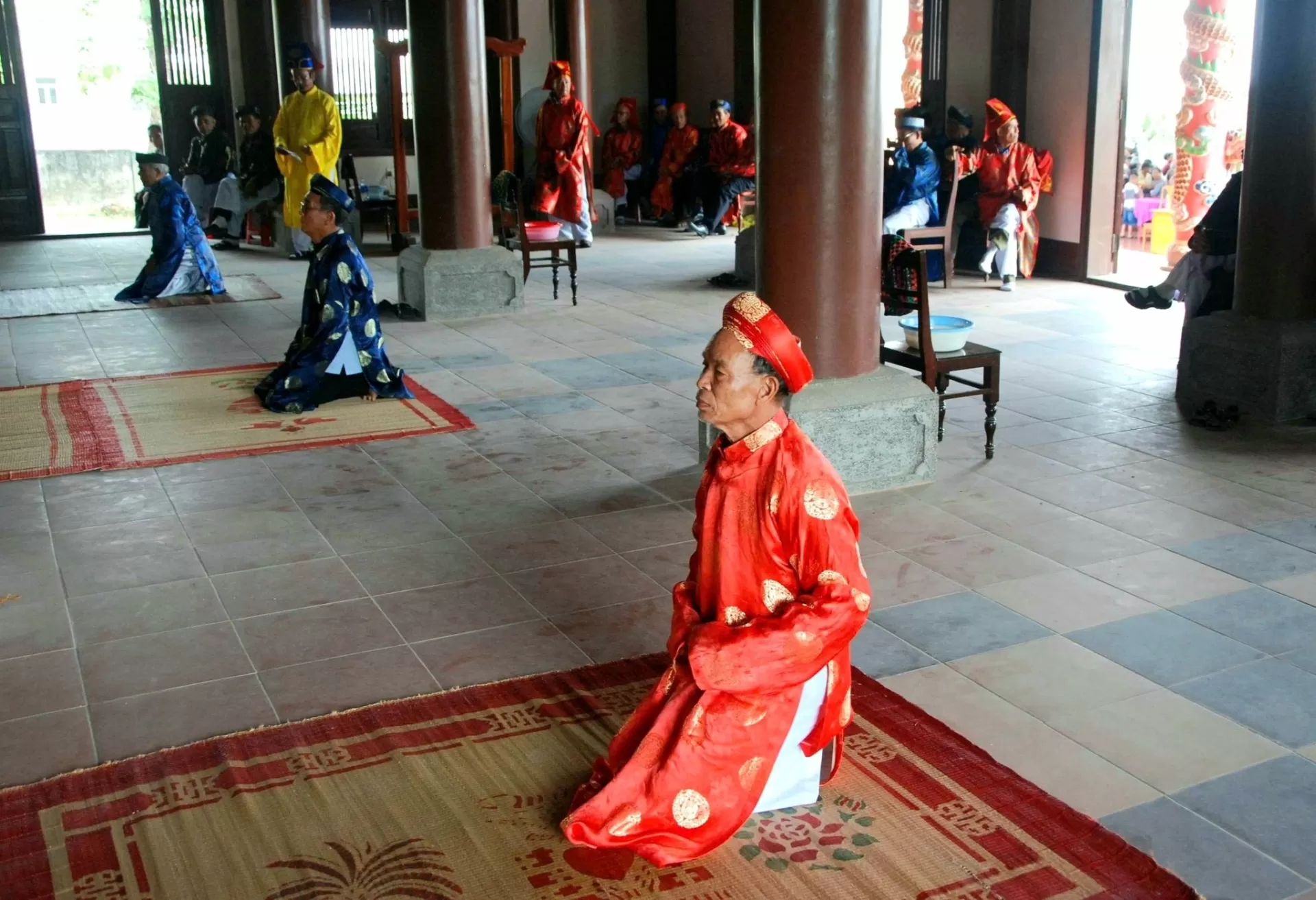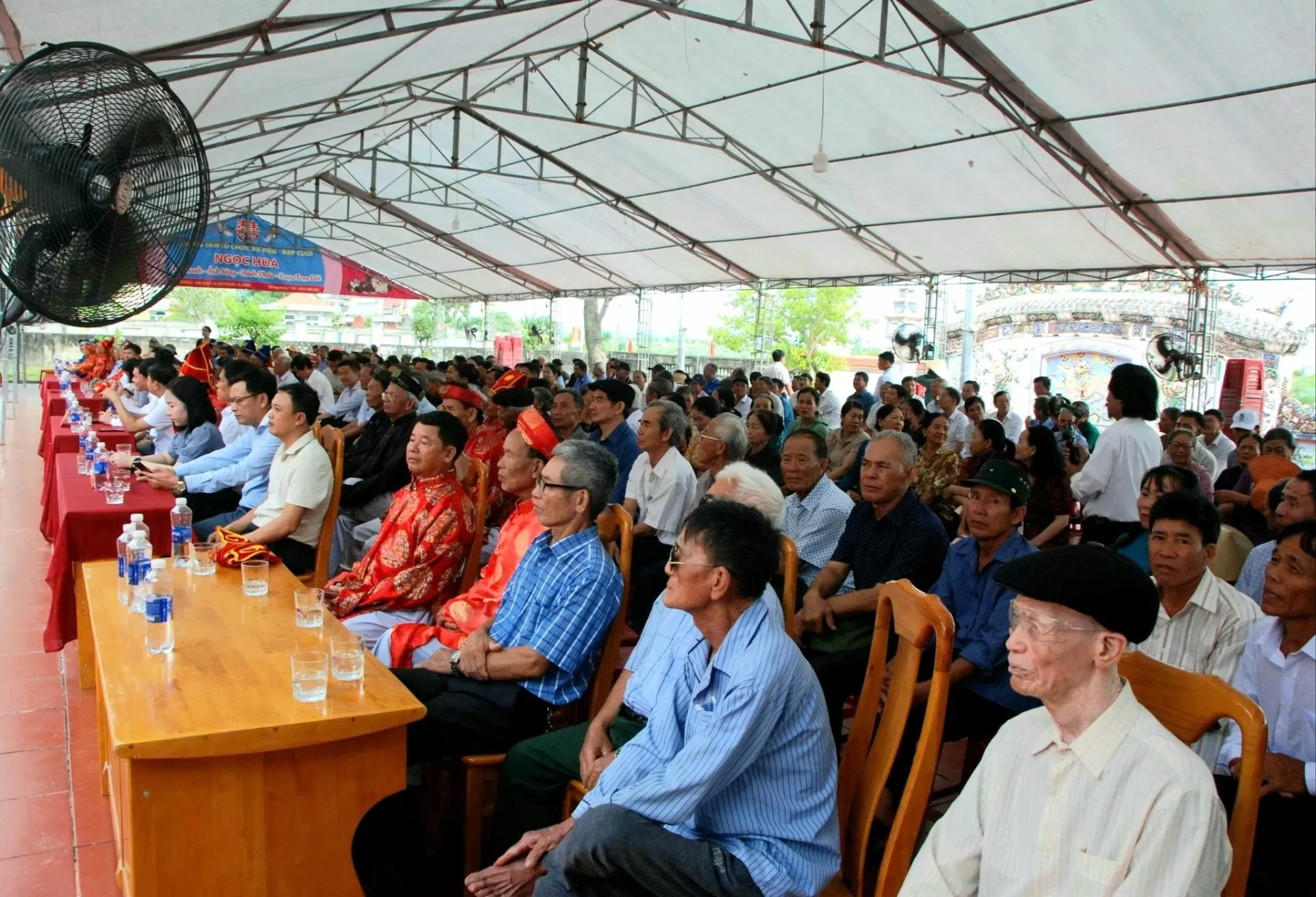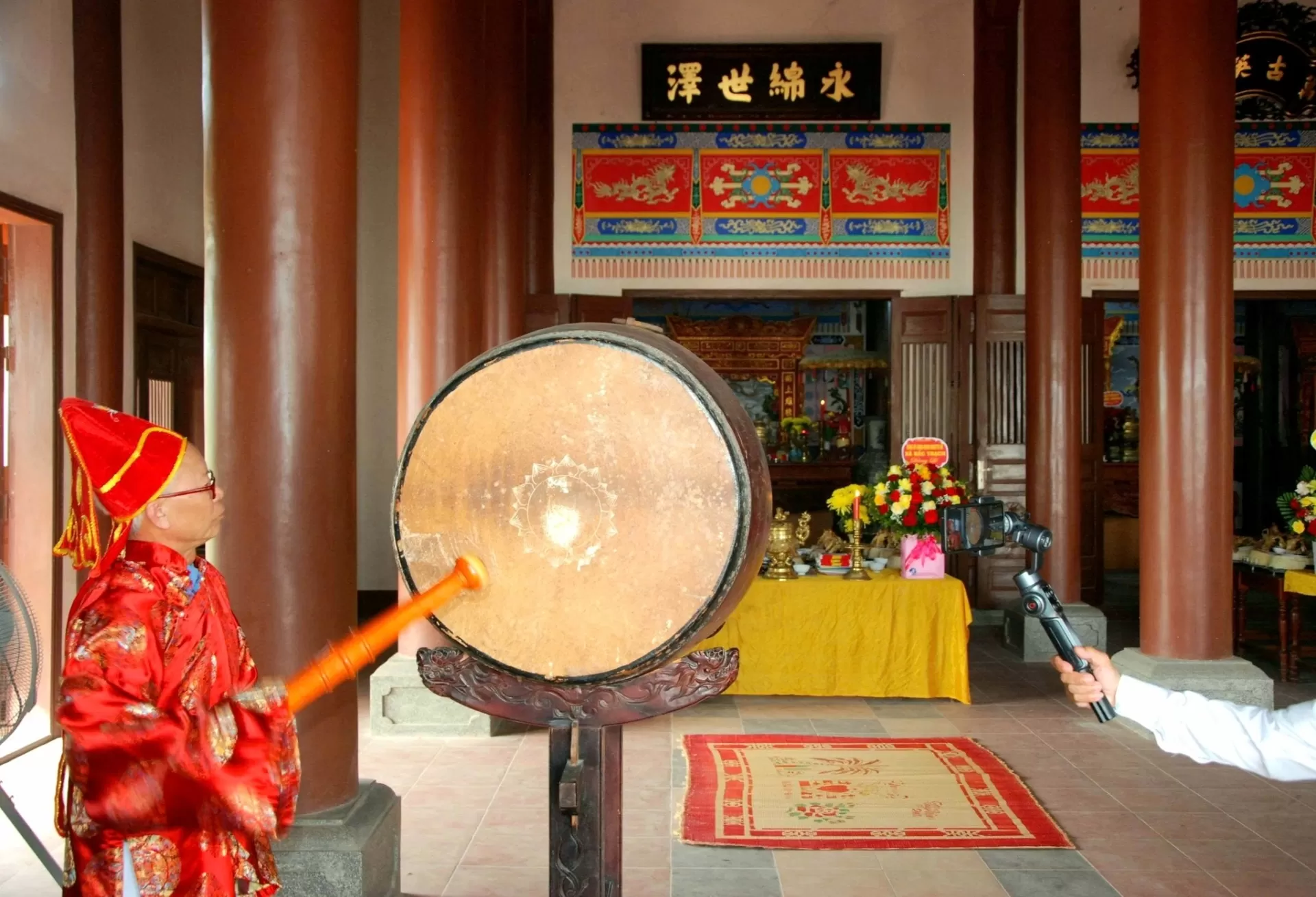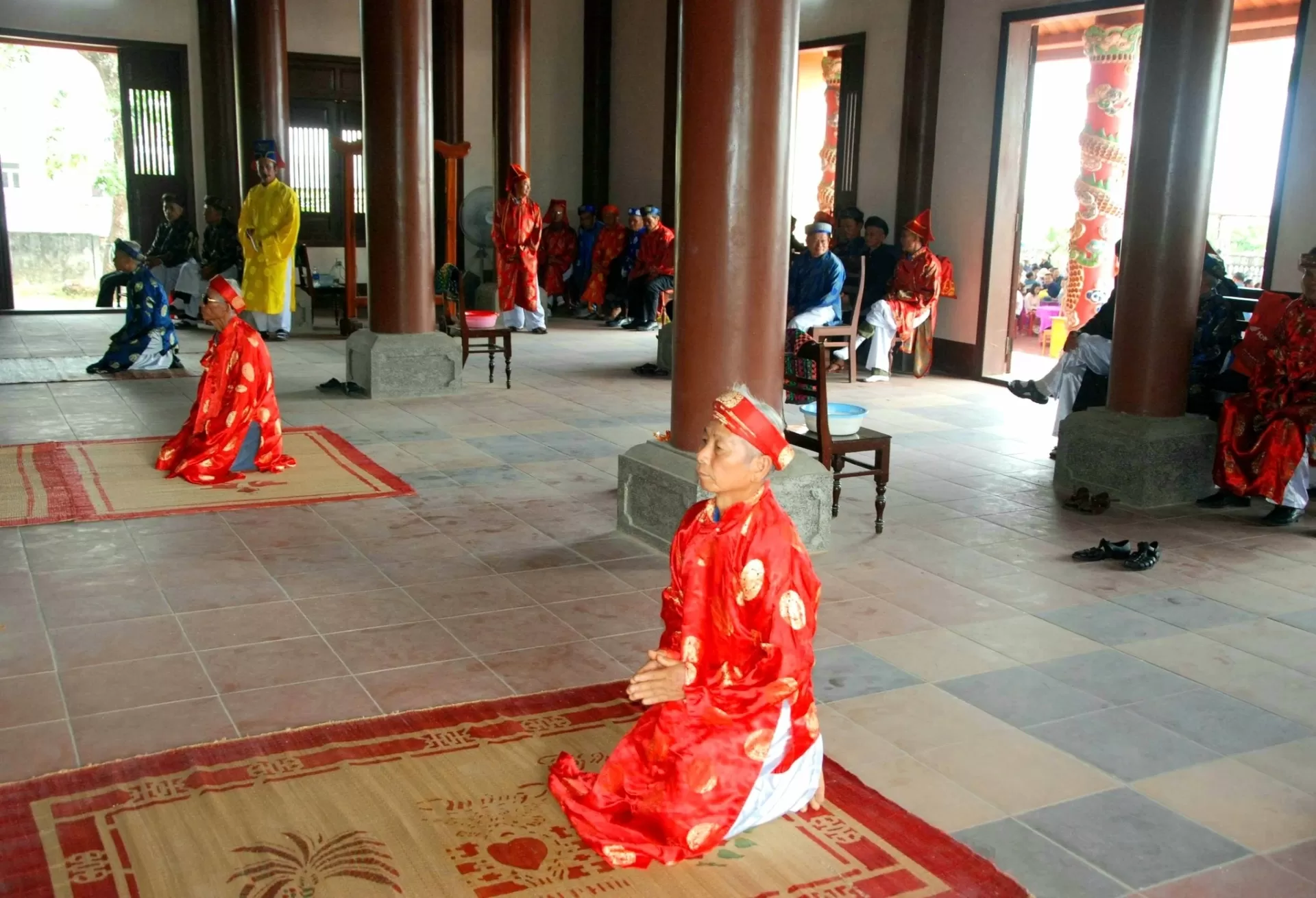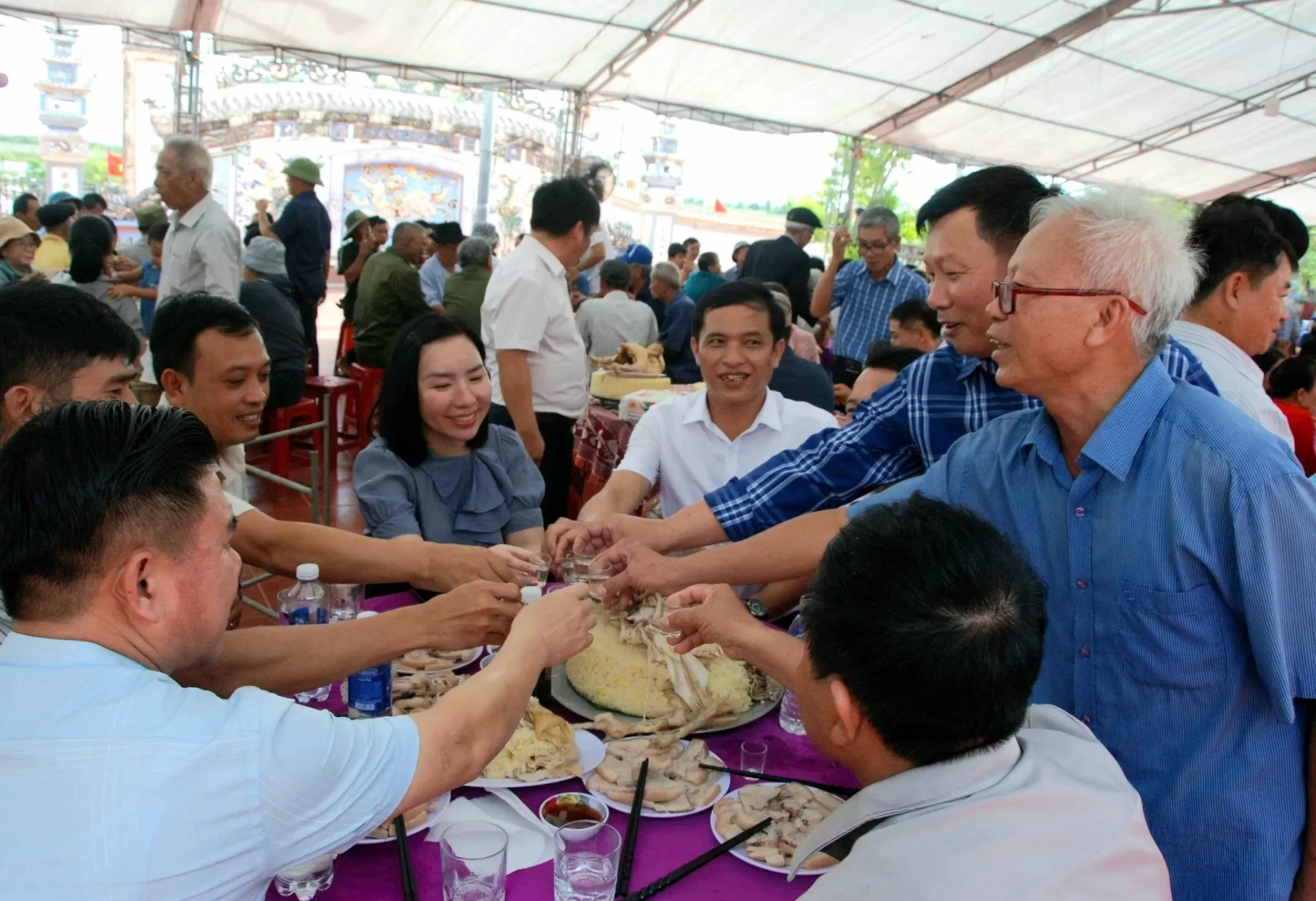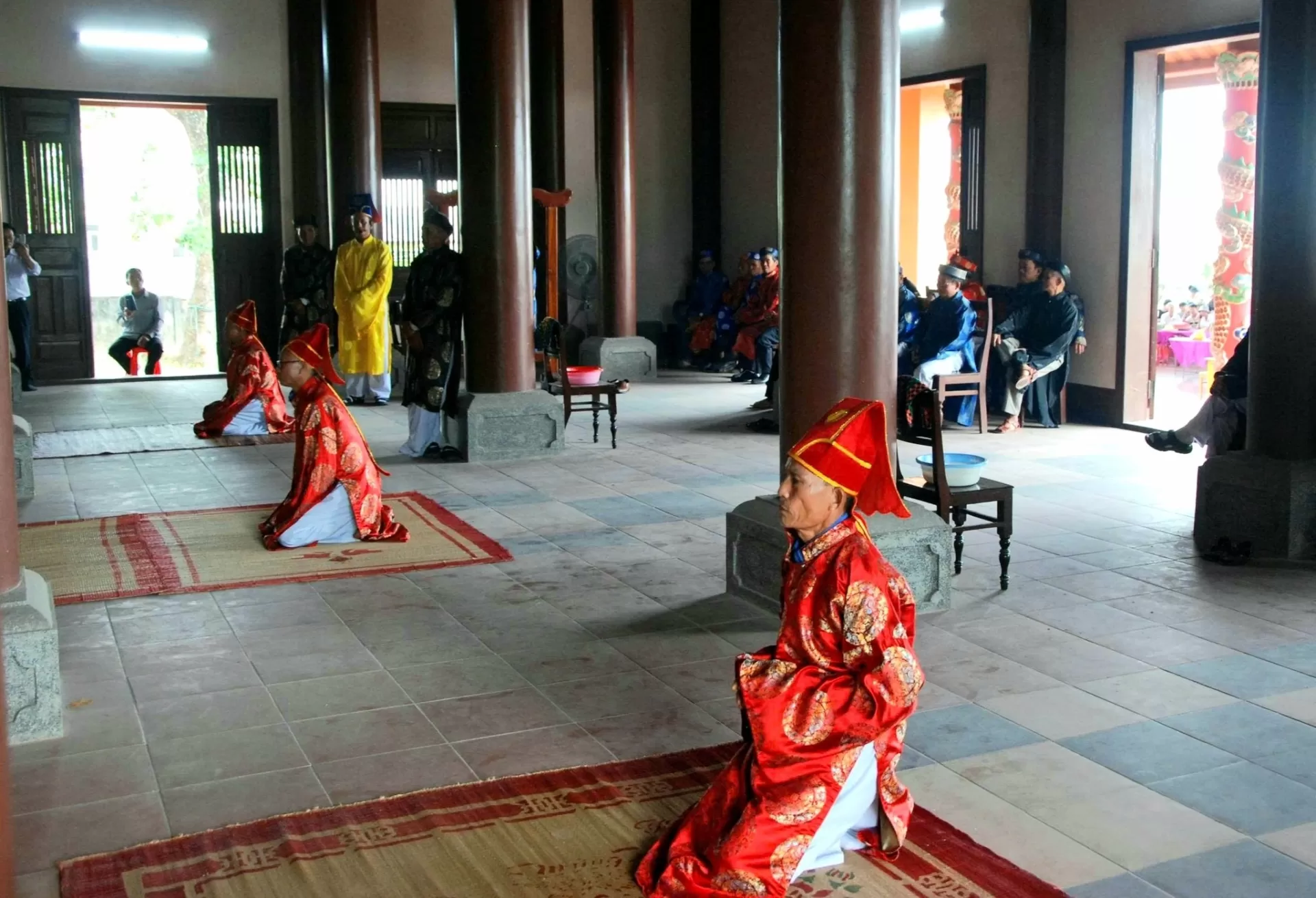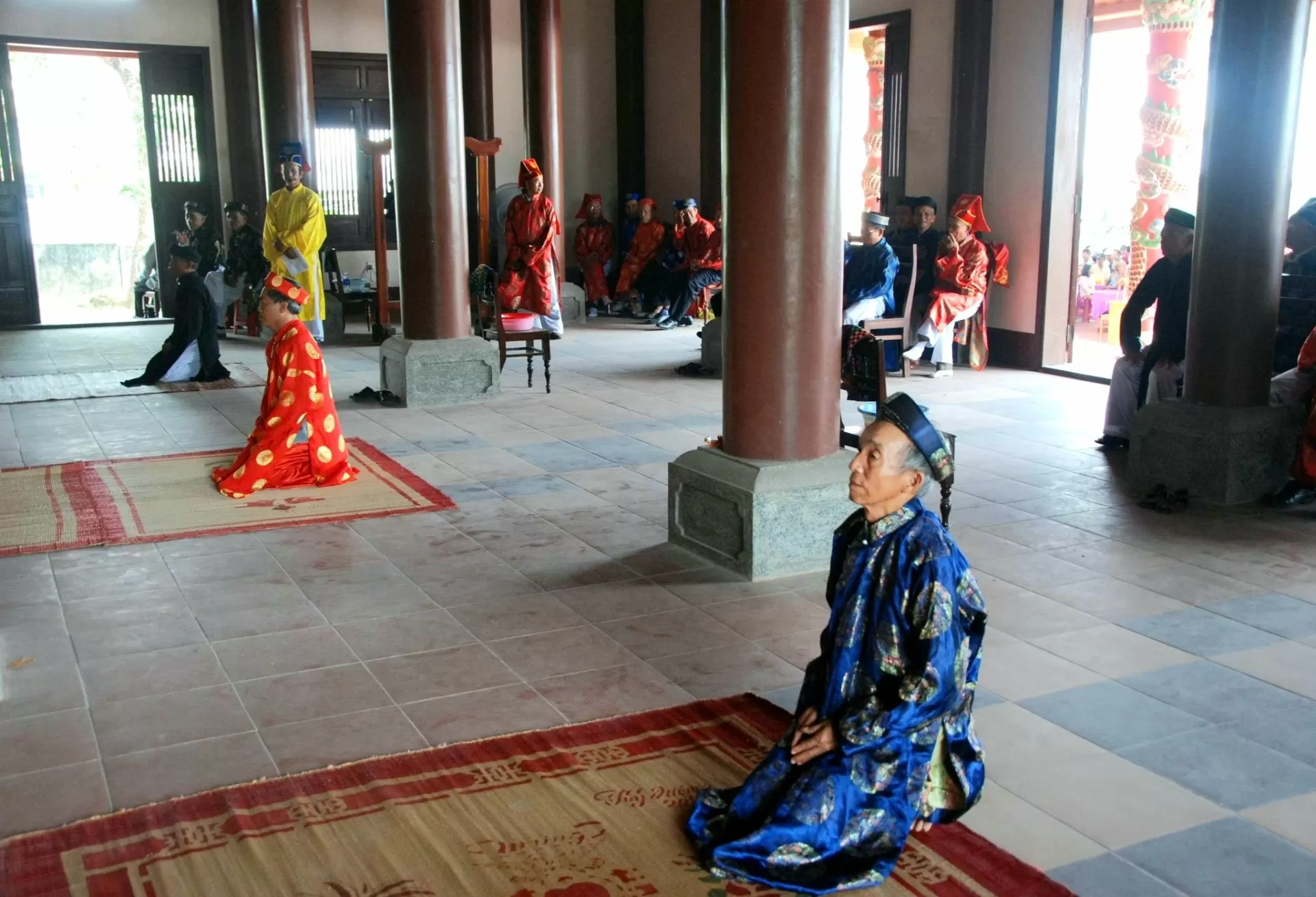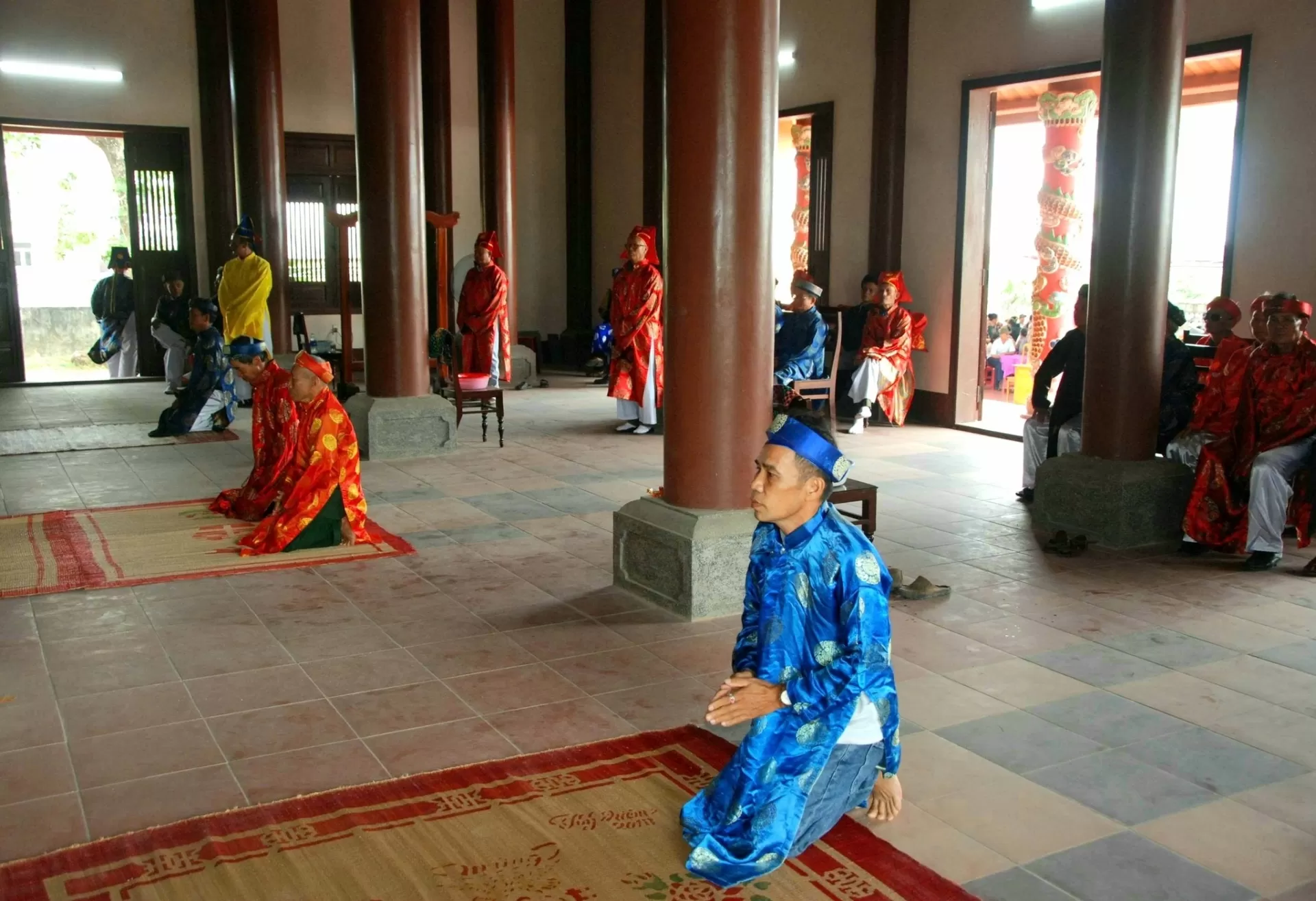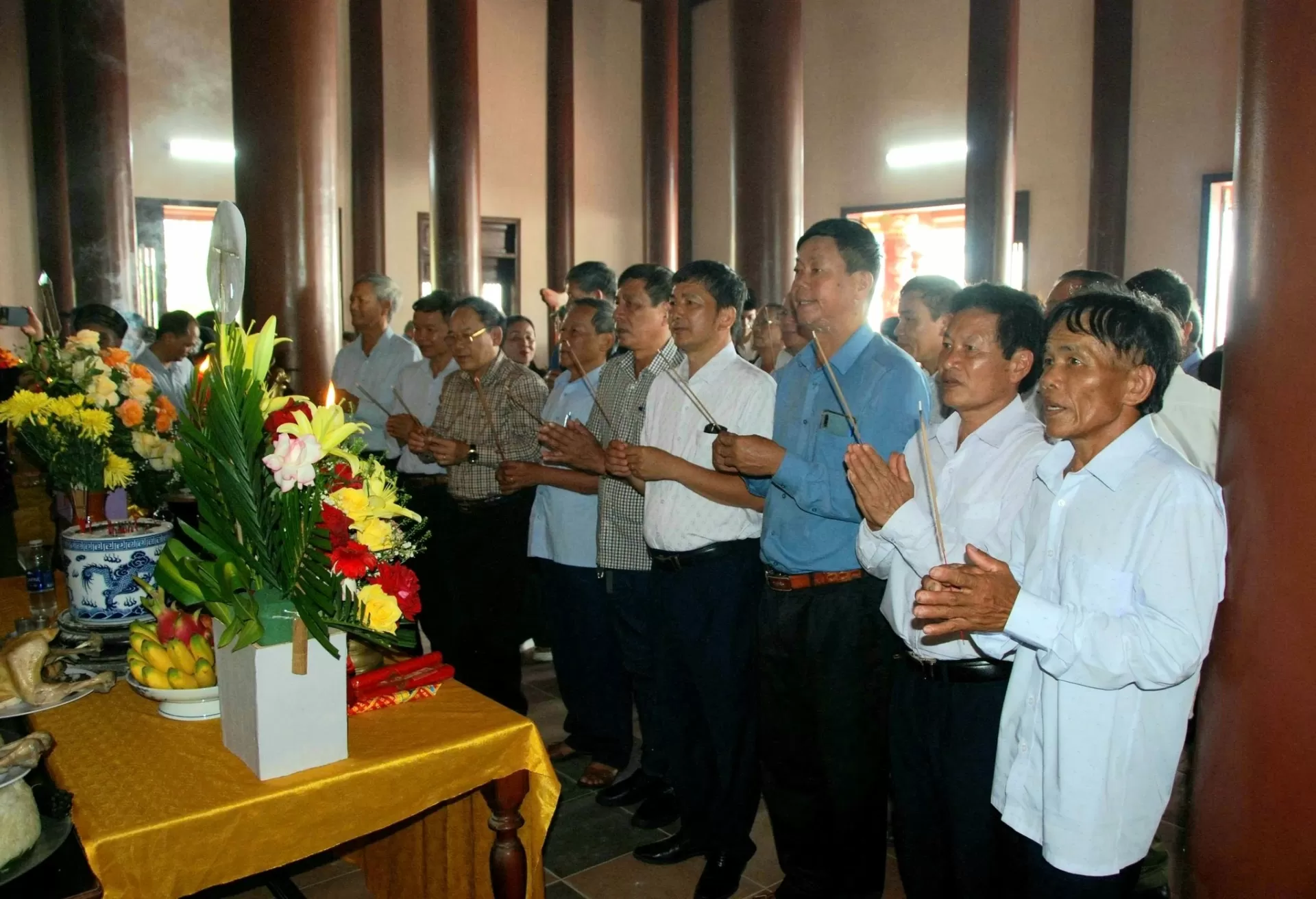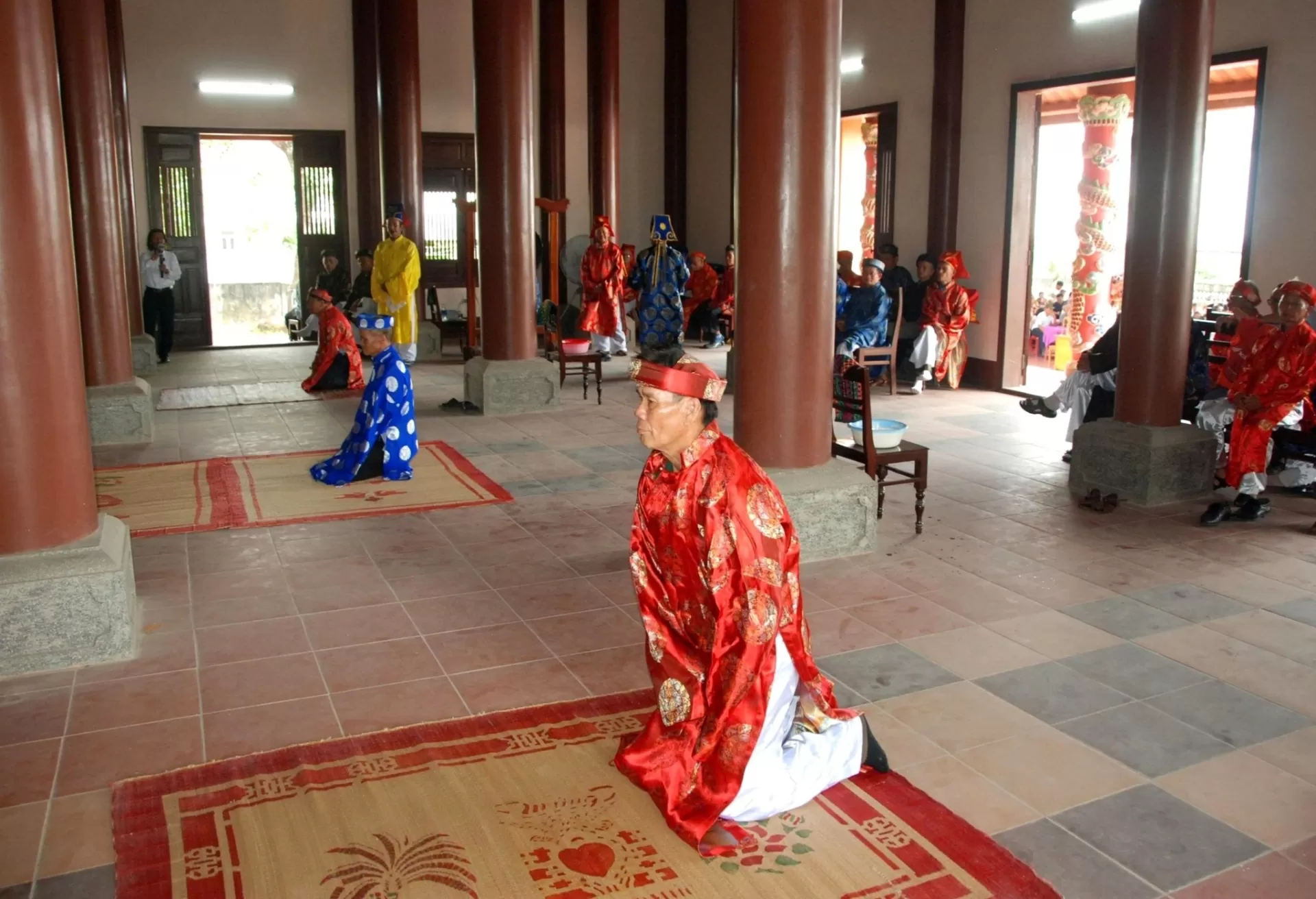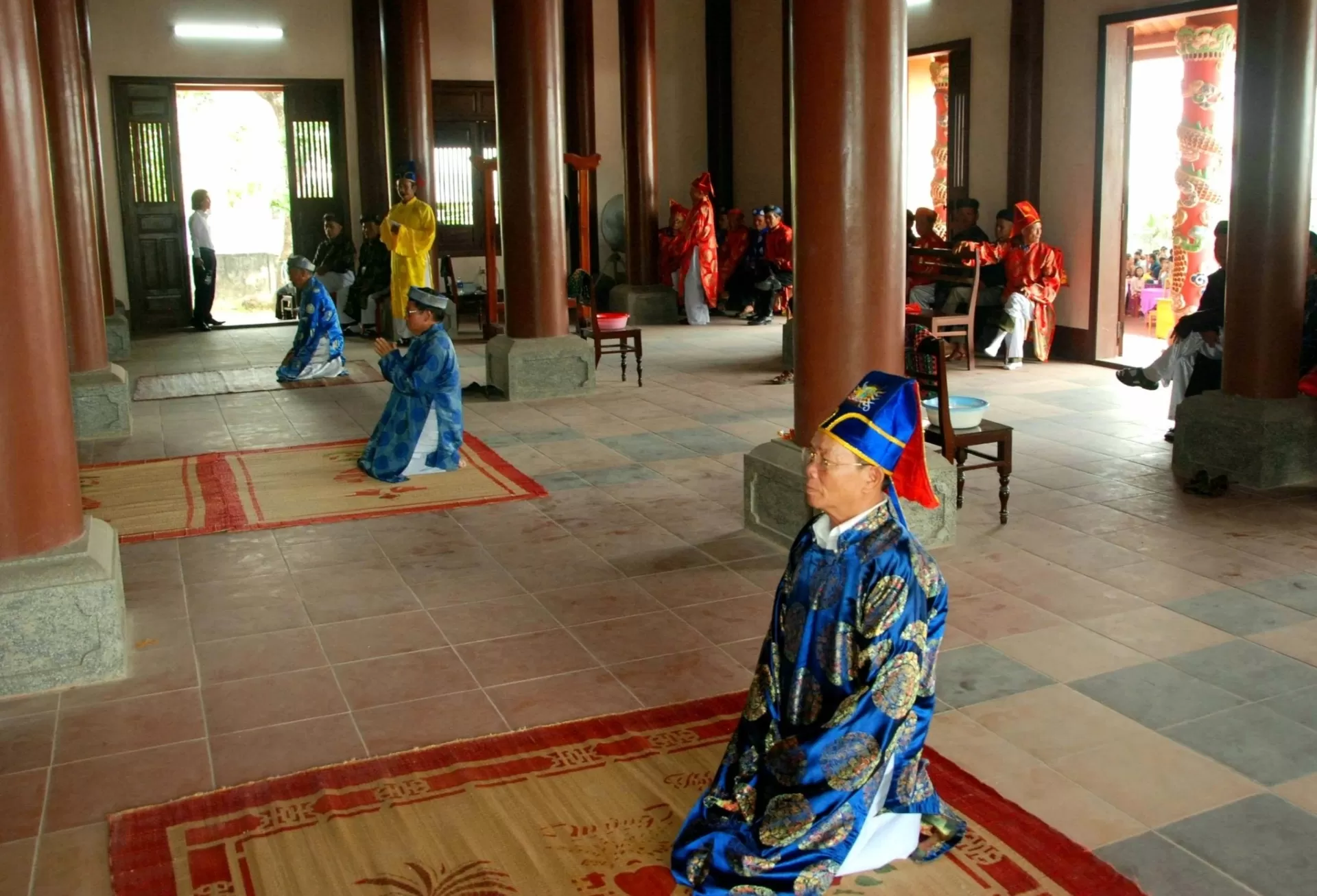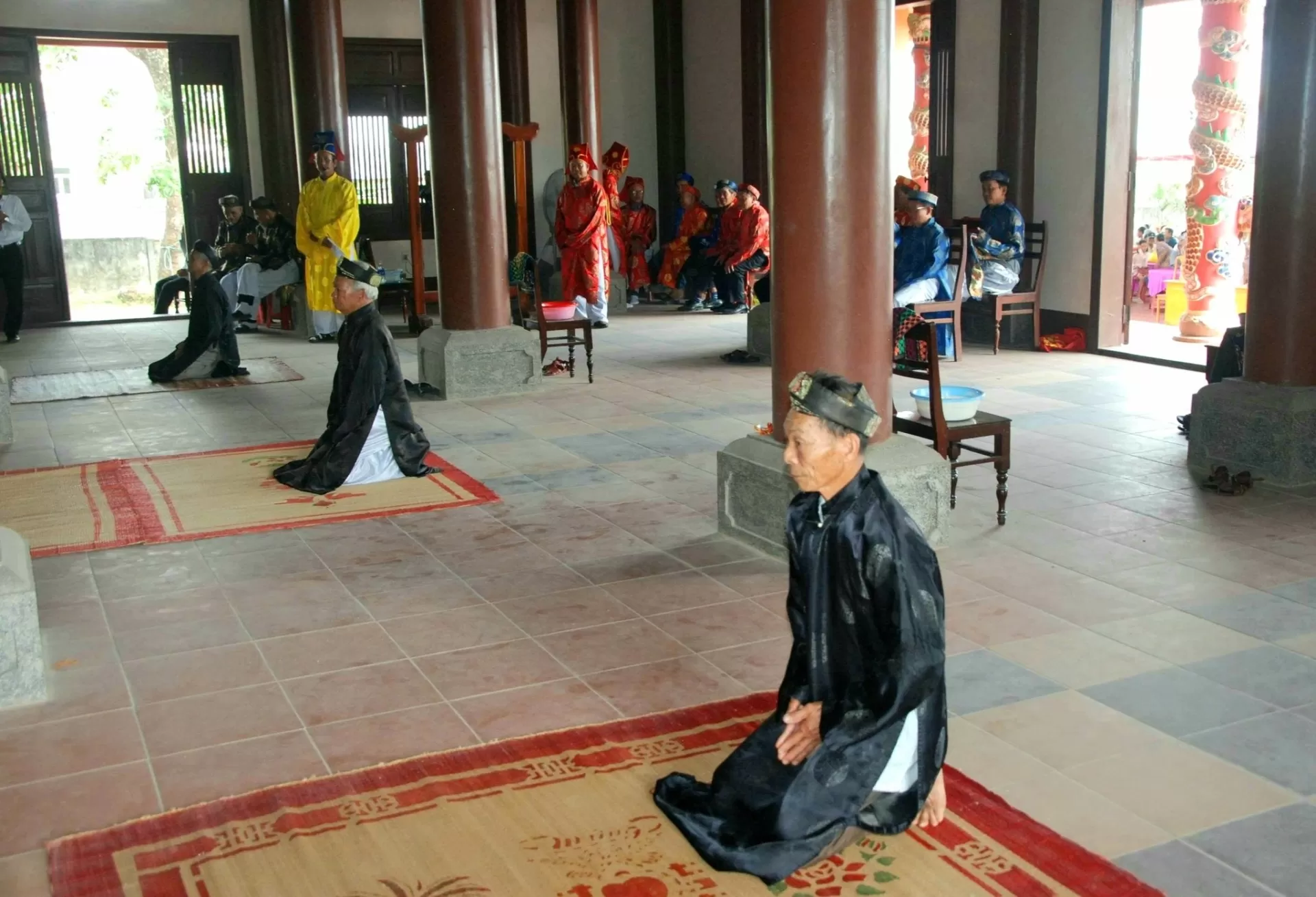Cao Lao Hạ village (present-day Hạ Trạch commune, Bố Trạch district, Quảng Bình province) lies on the side of the historic Gianh river. It is a village famous for its picturesque scenery and traditional fondness of learning. In front of the village, surrounded by vivid green rice paddies is a gently meandering water stream called Cửu Khúc Long Khê (lit. Nine-part Dragon River). Far in the south stands the Kỳ Sơn mountain range, resembling an enormous shield protecting the village. A paddy field lies in the south bank of Gianh river; villagers gave it the name Đồng Phố. Legend has it that Đồng Phố was once a main street whe-re a dynamic and vibrant market square was located. A creek curves around the back of the village f-rom Thành Lồi (lit. Lồi citadel) to Hói Hạ and then blends into the Gianh river. Temples and shrines embellish the scene and provide a magnificient view. Thành Lồi (Lồi citadel), a vestige that has recently drawn much attention f-rom historians and archaeologists, is located inside Cao Lao Hạ. The citadel, enclosed by deep trenches, was built with sand and mortar by Chăm people. Remnants of the past indicate that Cao Lao Hạ is a very old village.
The terrain of Cao Lao Hạ curves back and forth, creating an aesthetically pleasing landscape that looks like a giant boat. Houses are built in a very organized fashion; together the village paths resemble a big chessboard. All the houses face the South-West direction; thanks to exceptional planning no house front is ever obscured by another house. F-rom the Kỳ Sơn mountain range, one would see the front of every houses in the village.
In the south of the village, the first row of houses are the familial shrines. Each shrine corresponds to a family in the village; the shrines are constructed with traditional architectural designs. Family shrine is a place for members in the family to gather and worship family ancestors as well as founders of the village and first settlers in the area. Every year, during Tết Nguyên Đán (New Year) and Xuân Thu nhị kỳ (Spring and Autumn Commencement – middle of January and July), family members usually assemble in their shrine and make offerings to their ancestors.
All families in the village pick these same days to conduct worshipping ceremonies, so every time Tết or Xuân Thu nhị kỳ comes the village is filled with festivities; a celebrative but solemn atmosphere permeates through the whole area. Family members f-rom everywhe-re come and gather in their familial shrine. The path in front of the village, called Đường Bạn (lit. Friend Path) is crowded with people going to familial ceremonies. It is a great time for people in the village to build and strengthen their relationships.
On the 30th of December (Lunar Calendar), family members aret convened in their shrine by the family head (trưởng họ) in order to conduct “tục yết” ceremony, a ritual to invite the ancestors to join in with the festivities. On the first day of New Year, people worship and make offerings to the ancestors. Bánh chưng is often used as the offering. At about 9 am, people bring worshipping items and offerings to the shrines. The ceremony honoring the ancestors start at 11 am; all preparations for the ceremony need to be completed by then. Responsible for conducting the ceremony are the family head (trưởng họ), heads of sub-family branches (trưởng chi), a senior (tiên chức) who reads the worshipping speech, two attendants (chấp lệnh, one in c-harge of the drum, the other of the gong) and three ceremony assistants (lễ sinh) in c-harge of general preparations. The family head is the main person conducting the ceremony. Often, an aged and knowledgeable person in the family would serve as lễ sinh. He would then pray to the ancestors to ask for prosperity, good health and education for the whole family. It is a traditional cultural value. After the main ceremony at the shrines, people would take the offerings back home and put them on their own altar. For the first three days of the New Year, family members would take turn to stay at the shrine and look after worshipping items. After they are done with their home duties, many people would come back to the shrines, gathering with other family members and relieving old memories.
On occasions of Xuân Thu Nhị Kỳ, family members also convene in their family shrine. The offering made to the ancestors is often sticky rice. The ceremony is conducted in a similar fashion as the New Year ceremony. After the ceremony, a portion of the offering will be served right in the shrine for the family members who attended the ceremony. The rest of the offering (called lại cỗ) is brought back home for people who could not attend (most of them women). Apart f-rom Tết and Xuân Thu Nhị Kỳ which are occasions when all families will hold ceremonies, each family also has their own date to commemorate their ancestors (called ngày giỗ tổ or ngày kỵ họ). This date is different for each family in the region.
Moreover, the village has a common annual date for the ritual tảo mộ (visiting and cleaning the village’s gravesites, also called nghĩa trũng or xúi cỏ). The ritual is held in the middle of the third month in the Lunar calendar (ie. tiết thanh minh). Every family in the village has their own gravesite bring together many graves of the family’s ancestors; yet there are anonymous graves that villagers do not know belong to whom and to which family. With the villagers’ determination of not letting any single grave not taken care of, during this occasion, villagers will together visit the anonymous graves. Every family will participate. The ceremony worshipping anonymous antecedents who passed away will be held on a ground area in the middle of the rice paddies; the floor is paved with stone, surrounded by narrow trenches. Near this area is the village’s common gravesite.
Families in the village, especially those that were first to settle in the area and those who delivered many successful people, embrace a great sense of solidarity and mutual respect. Although not listed as one of Bát danh hương (The eight famous villages) of Quảng Bình, Cao Lao Hạ is still widely known for bearing and rasing many successful and accomplished persons.
There are a total of 24 families in Cao Lao Hạ village; some of the names include Lưu Quan, Lưu làng, Lưu Công, Đặng, Lê Văn, Nguyễn Phúc, Nguyễn Danh, Nguyễn Văn, Lê Chiêu, Nguyễn Xuân, Lê Quang, Nguyễn, Trần, Nguyễn Khắc, Nguyễn Đăng... Most of the families have their own farm land and their own shrine, which is built on the most beautiful terrains in the village. In the past during the war with America and South Vietnam, many places in Cao Lao Hạ were heavily bombed, such as the Gianh ferry station, Ba Trại road… Many houses, schools and medical centers were destroyed. Family shrines suffered f-rom the bombing too; many of them were completely eradicated; a few barely survived the war but deteriorated as time passed. However, since then family members at each family have united and donated money to rebuild the shrines. The shrines nowadays are built solidly and spaciously, although they are not able to retain their old appearance. In rebuilding the shrines, family members living nearby volunteered time and effort; those living far away donated money. Reconstruction of some shrines cost several hundreds millions Vietnam Dong, and was completely financed by donation of family members. Every year, especially around the time of Tết and other traditional ceremonies, family members living far away usually come back to meet with their relatives and to visit and make offering at the family shrine.
Nowadays, industrialization and modernization of the country have changed the landscape of Cao Lao Hạ village significantly. The village now abounds with electricity, roads, schools and markets. Technological advancements help improve life and farm production of villagers. Shrimp farms near Hói Hạ, Đồng Phố, Gianh river, fish farms, duck farms and rice paddies in Đồng Cửa, Bàu Mật, Bàu Vuông, Cồ Cui, Cồ Sác, Cồn Vườn... have all contributed to a better standard of life and income of the locals. Farmers with annual income of tens of millions Vietnam Dong are not rare. Thanks to recent economic development, families became more capable of renovating their shrines. The Friend path in front of the village was recently expanded to better serve the people and the production.
Family shrines and traditional ceremonies constitute an idiosyncratic value of Cao Lao Hạ village. Cao Lao Hạ is one of the few villages in Quảng Bình that have managed to preserve these values. As people of Cao Lao Hạ, it is our responsibility to help preserve these traditional values and futher contribute to the socio-economic development of the village.
The Vietnamese version of this article can be found here. (Xem bản tiếng việt tại đây)



